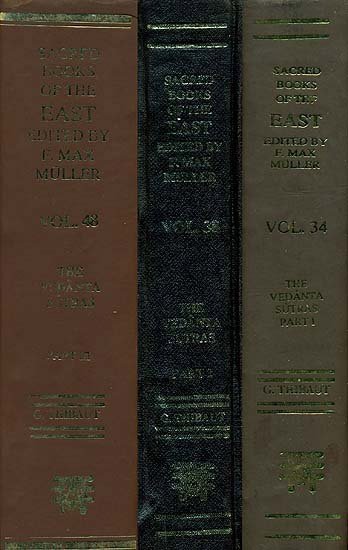Brahma Sutras (Ramanuja)
by George Thibaut | 1904 | 275,953 words | ISBN-10: 8120801350 | ISBN-13: 9788120801356
The English translation of the Brahma Sutras (also, Vedanta Sutras) with commentary by Ramanuja (known as the Sri Bhasya). The Brahmasutra expounds the essential philosophy of the Upanishads which, primarily revolving around the knowledge of Brahman and Atman, represents the foundation of Vedanta. Ramanjua’s interpretation of these sutras from a V...
Sutra 1.2.32
32. On account of imaginative identification, thus Jaimini thinks; for thus the text declares.
The teacher Jaimini is of opinion that the altar is stated to be the chest of Vaiśvānara, and so on, in order to effect an imaginative identification of the offering to Prāṇa which is daily performed by the meditating devotees and is the means of pleasing Vaiśvānara, having the heaven and so on for his body, i.e. the highest Self, with the Agnihotra-offering. For the fruit due to meditation on the highest Self, as well as the identity of the offering to breath with the Agnihotra, is declared in the following text, 'He who without knowing this offers the Agnihotra—that would be as if removing the live coals he were to pour his libation on dead ashes. But he who offers this Agnihotra with a full knowledge of its purport, he offers it in all worlds, in all beings, in all Selfs. As the fibres of the Ishīkā reed when thrown into the fire are burnt, thus all his sins are burnt.' (V, 24, 1-3.)
